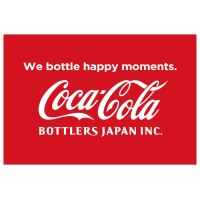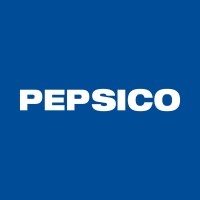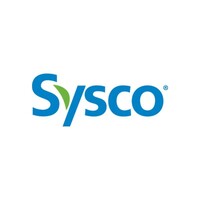Company Cyber Security Posture
NANA
NA Company Details
NA
NA
NA
NA
NA
NA
Scan still pending
NA
NA
Between 200 and 800
This score is AI-generated and less favored by cyber insurers, who prefer the TPRM score.
 NA Global Score
NA Global Score.png)

Company Scoring based on AI Models
| Model Name | Date | Description | Current Score Difference | Score |
|---|---|---|---|---|
| AVERAGE-Industry | 03-12-2025 | This score represents the average cybersecurity rating of companies already scanned within the same industry. It provides a benchmark to compare an individual company's security posture against its industry peers. | N/A | Between 200 and 800 |
Company Cyber Security News & History
| Entity | Type | Severity | Impact | Seen | Url ID | Details | View |
|---|
Company Subsidiaries

NA
Access Data Using Our API

Get company history
.png)
NA Cyber Security News
Overcoming Risks from Chinese GenAI Tool Usage
China-based GenAI tools used by 1059 employees exposed sensitive enterprise data, raising global compliance concerns.
Soco404 and Koske Malware Target Cloud Services with Cross-Platform Cryptomining Attacks
Two malware campaigns, Soco404 and Koske, target cloud services with cryptominers via images and misconfigurations.
Trump AI plan calls for cybersecurity assessments, threat info-sharing
The U.S. government will expand information sharing, cyber risk evaluations and guidance to the private sector to address the cybersecurity ...
Introducing the smarter, more sophisticated Malwarebytes Trusted Advisor, your cybersecurity personal assistant
Malwarebytes Trusted Advisor has had an update, and it's now sharper, smarter, and more helpful than ever.
Contract lapse leaves critical infrastructure cybersecurity sensor data unanalyzed at national lab
Data from sensors that detect threats in critical infrastructure networks is sitting unanalyzed after a government contract expired this weekend ...
Wake Tech program molds cybersecurity experts of the future, helps inform business owners
Wake Tech is shaping the future of cybersecurity with its innovative Sentinel program, empowering students to become industry experts while ...
Cybersecurity jobs available right now: July 22, 2025
Here are the worldwide cybersecurity job openings available as of July 22, 2025, including on-site, hybrid, and remote roles.
Agentic AI Turns Enterprise Cybersecurity Into Machine vs. Machine Battle
The first AI-driven preemptive cyber-defense has taken place. Now, corporate leaders may need to confront questions about agentic AI.
The books shaping today’s cybersecurity leaders
From strategy and psychology to history and decision-making, these are the books CISOs recommend to sharpen your thinking, influence your ...

NA Similar Companies

Coca-Cola Bottlers Japan Inc.
Coca-Cola Bottlers Japan Inc. (CCBJI, Security Code: First Section of TSE 2579), which has been established through the integration between Coca-Cola West and Coca-Cola East Japan on April 1, 2017, is one of the largest soft drink companies in Japan and the largest Coca-Cola bottler in Asia with sal

PepsiCo
PepsiCo is a playground for curious people. We invite thinkers, doers, and changemakers to champion innovation, take calculated risks, and challenge the status quo. From executives to team members on the front lines, we’re excited about the future. We take chances. Together, we dare to make the worl

Sysco
Sysco is the global leader in selling, marketing and distributing food products to restaurants, healthcare and educational facilities, lodging establishments and other customers who prepare meals away from home. Its family of products also includes equipment and supplies for the foodservice and hosp

Molson Coors Beverage Company
From Coors Light, Miller Lite, Molson Canadian, Carling and Staropramen to Coors Banquet, Blue Moon Belgian White, Leinenkugel’s Summer Shandy, Vizzy, Creemore Springs and more, our 16,000+ employees across the globe make and market many of the most beloved beverage brands in the world. While our hi

Solico Group
It has long been a mission of Solico Group’s founder, Gholamali Soleimani, to enrich people’s lives with the joy of diversified tastes. As an alliance of over 30 subsidiaries with around 17,000 employees, Solico Group’s business includes dairy, meat, snacks, beverages, ice-cream, and other fo

Perfetti Van Melle
Perfetti Van Melle is a privately owned company, producing and distributing candies and chewing gums in more than 150 countries worldwide. Employing over 17.000 people and operating 37 companies throughout the world, Perfetti Van Melle has a true global reach: it is present in the Asia Pacific Reg

Frequently Asked Questions
Explore insights on cybersecurity incidents, risk posture, and Rankiteo's assessments.
NA CyberSecurity History Information
How many cyber incidents has NA faced?
Total Incidents: According to Rankiteo, NA has faced 0 incidents in the past.
What types of cybersecurity incidents have occurred at NA?
Incident Types: The types of cybersecurity incidents that have occurred include .
Additional Questions
What Do We Measure?
















Every week, Rankiteo analyzes billions of signals to give organizations a sharper, faster view of emerging risks. With deeper, more actionable intelligence at their fingertips, security teams can outpace threat actors, respond instantly to Zero-Day attacks, and dramatically shrink their risk exposure window.
These are some of the factors we use to calculate the overall score:
Identify exposed access points, detect misconfigured SSL certificates, and uncover vulnerabilities across the network infrastructure.
Gain visibility into the software components used within an organization to detect vulnerabilities, manage risk, and ensure supply chain security.
Monitor and manage all IT assets and their configurations to ensure accurate, real-time visibility across the company's technology environment.
Leverage real-time insights on active threats, malware campaigns, and emerging vulnerabilities to proactively defend against evolving cyberattacks.




